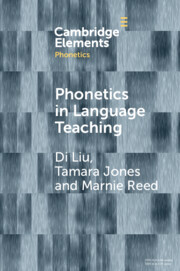Element contents
Phonetics in Language Teaching
Published online by Cambridge University Press: 19 December 2022
Summary
Keywords
Information
- Type
- Element
- Information
- Series: Elements in PhoneticsOnline ISBN: 9781108992015Publisher: Cambridge University PressPrint publication: 19 January 2023
